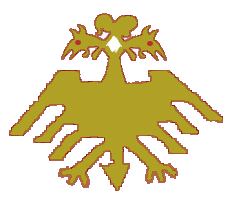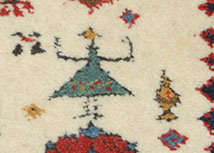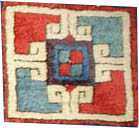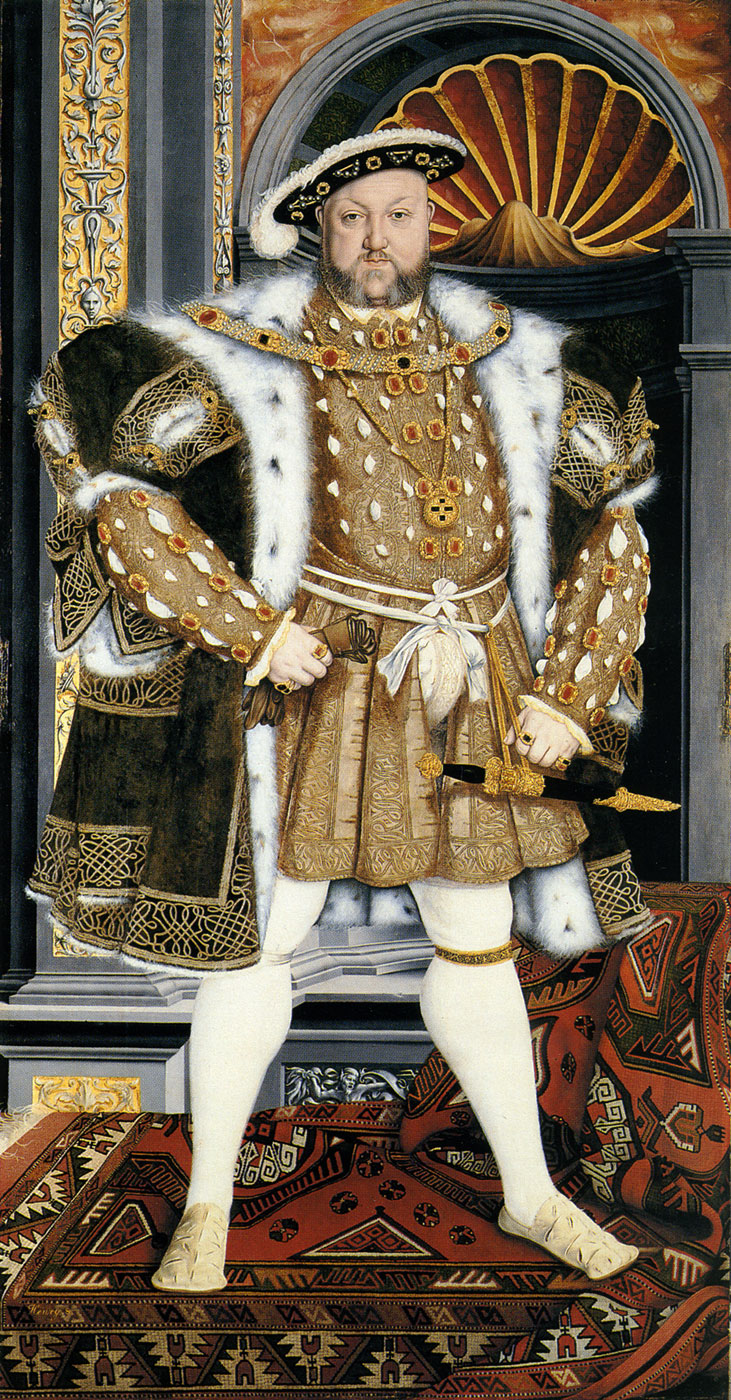
|
Shirvan Bijo ("Bidjov") rug
in anivory ground Code: SHRBJ03 Size: 203x309cm Size (ft): 6'7"x10'1" Area: 6.27 m2 Density: 160 000 knots per square meter, totally over 1 million knots Colors: ivory, gold yellow, medium brown, dark brown, red, medium blue, midnight blue, medium green, dark green, light green, royal blue, cinnamon, aubergine. Dyes: madder, weld (Reseda Luteola), onion skins, indigo, pomegranate skins, walnut husks, natural dark brown sheep wool, natural ivory sheep wool. Materials: Handcarded and handspun wool for pile, ivory wool warps and ivory wool wefts (two shots). 1cm of flatwoven kilim ends at both sides. - wool on wool Knots: Gördes (Turkish, symmetrical) Pile height: 0.6cm Ends: bundled knots Inscriptions:  tamga (tribal seal) of Afshar tribe _________________________  the word "Kut" (means good luck, fortune) in ancient Orhon Yenisey scripts Weaving Period: Four months Handwoven in Azerbaijan Design (by Vugar Dadashov): Ivory ground covered by a row of multi-colored Bidjov style radiating lozenges. Two fork-like vines surrond each lozenge. Two rows of smaller "eternal knot" rosettes are arranged on the top and bottom of the central field. Along the vertical central axis the following motifs are placed (from bottom to top): a carpet loom, a hooked motif with 6 horns represending a rams horn, a stylized kufic motif with small crescent like motifs, reciprocal birds facing to each other, comb, Tree of Life, double headed eagle motif of Seljuks (XII century) with two archaic style swastikas, a Shirvan style blossoming flower, an eight pointed star, a hooked tamga, Seljuk style octagonal star & a weaver figure. The other motifs of the central field are: A tree of life with crescent - inspired by a carved stonework in the Çifte Minareli Medrese of Erzurum Hatuniye Medresesi, built in 1253. .jpg) a carved stonework in the Çifte Minareli Medrese of Erzurum Hatuniye Medresesi, 1253 .jpg)  double headed eagle motif of Seljuks (XII century)  A samovar motif (a metal urn, often of brass, with a spigot near its base, widely used in Russian Empire to boil water for tea), water ewer  A lady dancing around a lamp  Boteh with a pitcher  "Kosa" - a carnival character known to the medieval folklore of spring holiday standing next a samani (green sprouting wheat - a sacred Novruz ceremony as the herald of spring. Sprouting samani symbolises sowing and a rich harvest, it represents grain, bread, increase and abundance) and sham (candlestick)  Quadripartite Turkoman Göl The yellow main border consists of a so called 'calyx and leaf' border.  King Henry VIII, (1537-1557) standing on a rug with a "calyx and leaf" main border. Unknown, after Holbein. Petworth House. |
Contact us for more information about this rug

.jpg)
.jpg)
.jpg)
.jpg)
.jpg)
.jpg)
.jpg)
.jpg)
.jpg)
.jpg)
.jpg)
.jpg)
.jpg)
Contact us for more information about this rug

|
For more information about the above rug or to place an order please email
vd@azerbaijanrugs.com |